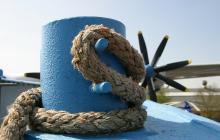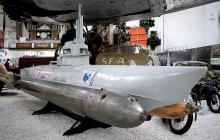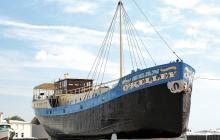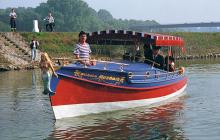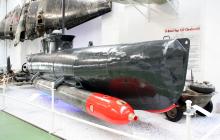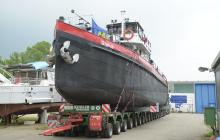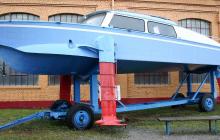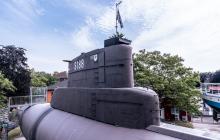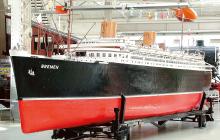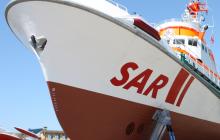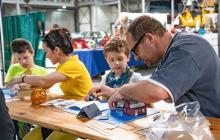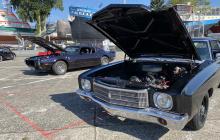One-Man-Torpedo
This piece of equipment is a typical example for the improvisations which the German armaments industry had to come up with as WW II dragged out. For the soldiers each undertaking was a “suicide mission“. Operations were only conducted at night. Only few crew members survived. The Torpedo-Research Institute at Kiel-Eckernförde was in charge of the development of the one-man torpedoes. First a German G7e standard-torpedo was simply attached to the bottom of another with the top torpedo equipped with a cabin for the driver in place of the ordinary explosive device. The driver was sitting under a dome of acrylic glass which afforded relatively good visibility at all sides.
The craft was unarmed, apart from the torpedo, and not submersible. The driver fired the torpedo via a simple back-front-sight device. At that time the unit was nicknamed “Neger“ (which means “Negro”) inspired by its black color and the name of one of its designers, navy colonel Richard Mohr (in German “Mohr” is another word for “negro”).
Starting in 1943, about 200 “Neger“ units were built, but successes were minimal. According to researches conducted after the war the “Neger“ was responsible for the demise of three minesweepers and one destroyer as well as damage caused to one cruiser and one destroyer. The great problems with this primitive piece of weaponry soon led to a larger, submersible version called “Marder“, as it is shown in the museum. Here the submersible is slightly larger than the attached torpedo. The “Marder” was deployed, for instance, against the allied troops during the Normandy Invasion.
Technical Data:
Production: from 1944 | Water Displacement: 5 tons (with torpedo) | Length: 8.3 m - Width: 0.5 m | Engine: 12 hp electric motor | Speed: 4-6 knots | Range: 48 nautical miles at 4 knots | Crew: 1 man | Weapons: 1 torpedo type G7e

